Source: Korea Tourism Organization/ Rhythm of Korea, Gangneung
At a time when travel almost came to a standstill last year, when overseas vacations were indefinitely cancelled and holiday resorts all over the world echoed with silence, the South Korean Government embarked on an initiative to provide the excitement of travel at people’s fingertips with videos that serenaded the viewers through breath-taking places around the country. These videos, with travel content and the added flavour of Hallyu (referring to the Korean Wave and anything related to it), guaranteed an instant success because of the widespread popularity of K-entertainment and, indisputably became the symbol of innovation in the tourism industry. It can be seen as part of the effort to boost the sinking tourism industry and keep the interest of prospective travellers kindled.
South Korea which has been a popular holiday destination for a long time, like the rest of the world experienced a sharp decline in the number of incoming foreign visitors and is reported to have plunged to a 32-year low. Though South Korea was never under a lockdown, it still imposes a mandatory two weeks quarantine on all foreign arrivals which dissuades travellers from visiting the country. As a result, South Korea’s tourism income hit a 17-year low in the second quarter of 2020 according to government data. Moreover, under the 2.5 level (the second highest out of a 5 tier system) of social distancing imposed in Seoul and 2.0 level extending to the rest of the country, in effect since December, dine-in restaurants were only open till 9pm, and a gathering of five or more people was restricted. Even internal travelling was discouraged in the last few weeks of December. Consequently, the famous sunrise viewing spots for the New Year like Gangneung’s Jeongdongjin, Homigot in Pohang and Namsan Park in Seoul were shut. The closure of all ski resorts, skating rinks and sledding hills was also enacted, and were only allowed to reopen after the 4th of January and under the condition that only one-third of its capacity could be filled. However, ahead of the Seollal (Lunar New Year) celebrations, the same social distancing regulations have been extended till the 14th of February, although the restrictions on restaurants and cafes outside of the Seoul metropolitan area have been relaxed recently and they are now allowed to operate till 10pm.

Jeongdongjin, Gangneung/ Source: Korea Trip trips
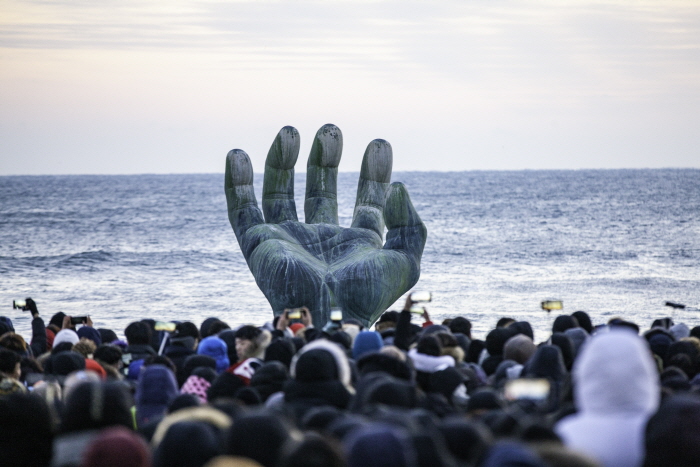
Homigot, Pohang/ Source: Korea trip trips
A digital alternative in the form of travel videos have become a substitute for restrictions imposed on physical travel. The spurt of creative pursuit in tourism through virtual travel was spearheaded in Korea by the Korea Tourism Organization (KTO) which is affiliated with the Ministry of Culture and Tourism. As an attempt to revamp the tourism industry reeling under the pandemic, KTO through its Youtube Channel Imagine Your Korea, released a virtual travel video series entitled ‘Feel the Rhythm of Korea’, with its stated purpose to #CheeruptheWorld. The video series feature six places- Seoul, Busan, Mokpo, Jeonju, Andong and Gangneung, all racking over 30 million views per video on Youtube while Seoul’s and Busan’s videos crossed 40 million views. The exploding number of views already seems to guarantee a tourism boom once the pandemic is over. The last video instalment in the series, yet to be released, is even more hyped up because of its collaboration with the cast members of the internationally well-known Korean variety show ‘1 Night 2 Days’ whose crew include Hallyu stars like Ravi from the male idol group VIXX, and actor Kim Seon-ho, whose popularity is expanding worldwide after the success of his recent Netflix drama ‘Start-Up’. The last location was also finalized through the same show and Incheon – the place where the journey to Korea begins as well as ends – was chosen.
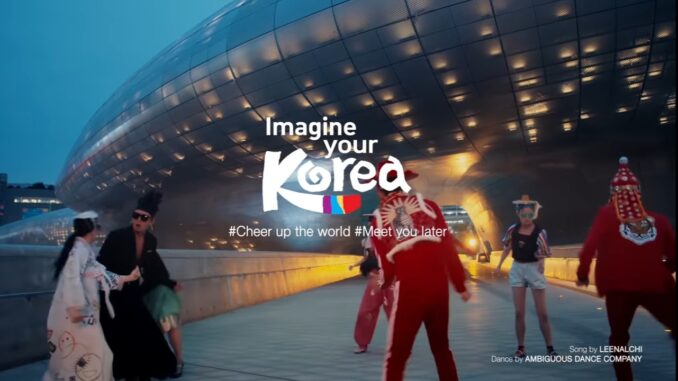
Source: Korea Tourism Organization/ Rhythm of Korea, Seoul
Source: Korea Tourism Organization/ Rhythm of Korea, Jeonju
The unique appeal of these videos lies in the way various tourist hotspots are introduced to viewers by a troupe of dancers, flitting from one place to the next, dancing to catchy music which is a harmonious blend of traditional and modern, making even non-dancers swing along to its irresistible tune. With KTO’s ingeniousness of combining upbeat fusion music with groovy dancers in colourful swanky attires, introducing tourist spots seem unbeatable! In fact, these videos bagged an award at the Tourism Innovation Awards 2020 during the Tourism Innovation Summit in Seville, Spain.
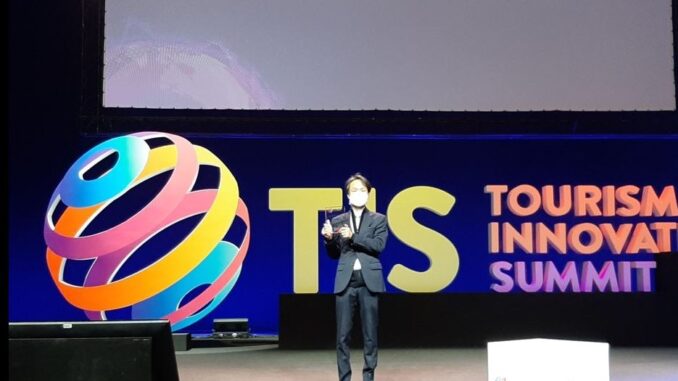
Source: Korea Tourism Organization via Koreatimes
Riding on the Korean Wave, KTO uses the influence of celebrities to reach a wider population, which is evident from some of its past videos featuring several popular idol group members like Girls Generation’s Im Yoo-nah, several members from EXO and the entire band members from ITZY.
Separate from KTO’s video series, certain city administrations like the Seoul Metropolitan Government have also released a promotional video ‘See You in Seoul’ on its official website, which features none other than the world-famous idol group, BTS. With BTS members as ambassadors for Seoul tourism, tourism in South Korea will definitely flourish when restrictions have been eased for travellers. The said video racked up 400 million views within two months of its release in September 2020. It is reported that the video generated 6-10 million views daily during the first two months of its release and it was produced in different languages. Targeting both travel buffs and Kpop fans, it appealed not only to the amalgam of tourists from different countries but BTS’ fan base, the ARMY itself!
These travel videos are remarkable because it reveals the resilience of the Korean tourism department and shows how it responded to the extraordinary circumstance and tried to adapt to it. However, the KTO travel videos have to be seen against the broader effort to revive tourism globally. The idea itself was not novel to Korea and travel videos were made by other countries as well with the view to sustain the interest of travellers. The Magical Kenya or the Magic Awaits campaign by Kenya Tourism Board is an example of a similar initiative. These virtual videos have a cathartic effect on the viewers, imbuing optimism in them to look forward to the day when free travel will once again be the norm. Other efforts in the same direction of boosting travel during the pandemic include the ‘flights to nowhere’, introduced for the sheer vanity of being air-bone itself, with flights taking the passengers on tour over designated places and returning to the same airport without making a landing elsewhere. These flights with no destination became highly popular in several countries, and in some cases like the Qantas Airline of Australia, the tickets sold out within 10 minutes of going on sale! Korea too did not fall behind in this trend and Busan Air navigated its first flight to nowhere in September, followed by Jeju Air and Asiana Airlines in the following months.
All these trends notwithstanding, the ‘Rhythm of Korea’ video series, owing to its wide appeal to both casual travellers and K-pop lovers, seem to be in a class of its own and is definitely representative of travel innovation during the pandemic. The KTO travel videos meant to cheer up the world during this grim phase of our lives with its ‘Let’s Meet Again, From Korea’ captions are compelling and persuasive. Commanding the power of Hallyu with a superbly packaged image of a magical Korea, they guarantee the resurgence of tourism and make Korea an imminent hotspot.
South Korea is calling, but until the day tourists can visit carefree, Korea’s award-winning videos are there to gratify the restless desire for travel.
- Race Against Time: South Korea’s Role in Mitigating Climate Change - September 8, 2021
- Countering Oppressive Ideologies: Reasons Why India Cannot Write off Liberal Arts and the Social Sciences - July 21, 2021
- Is there a Silver Lining in the Plight of Multi-Ethnic Children Against Bullying in Korea? - May 7, 2021

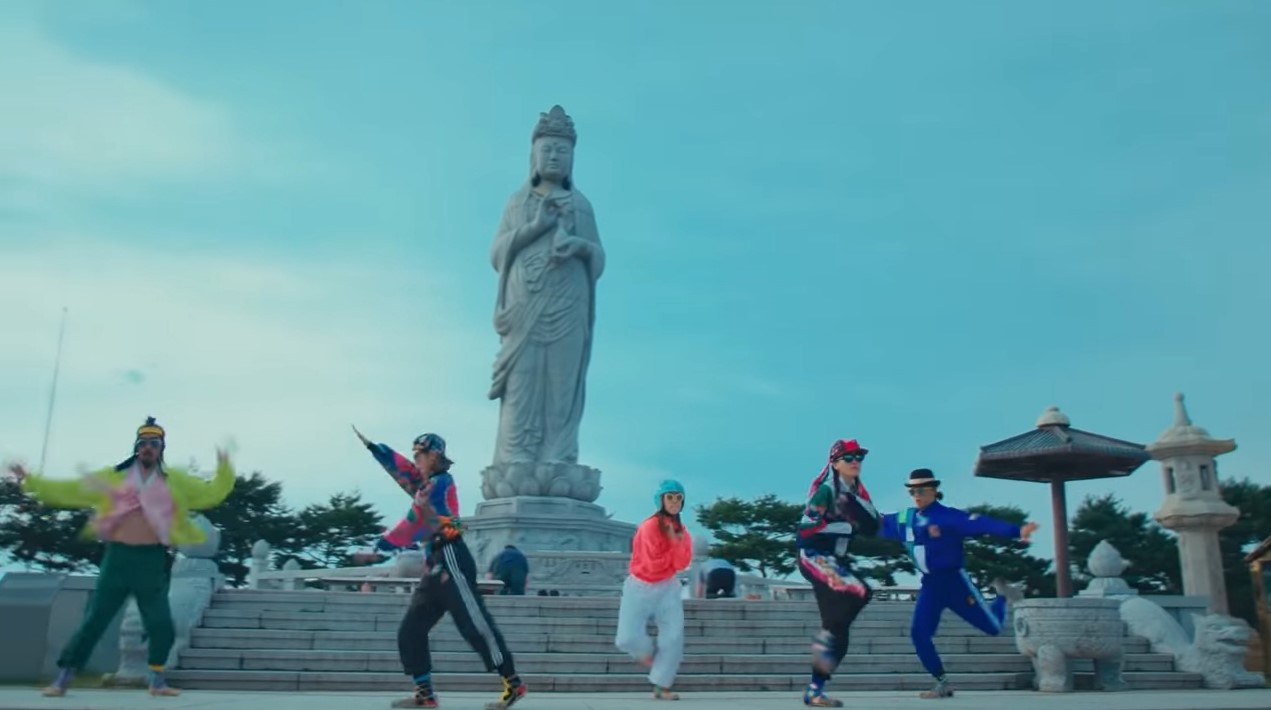
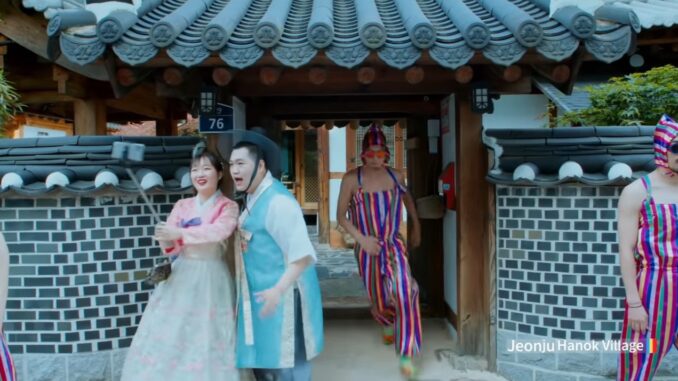


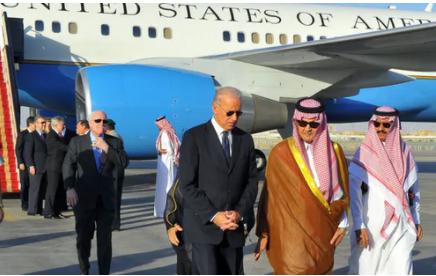
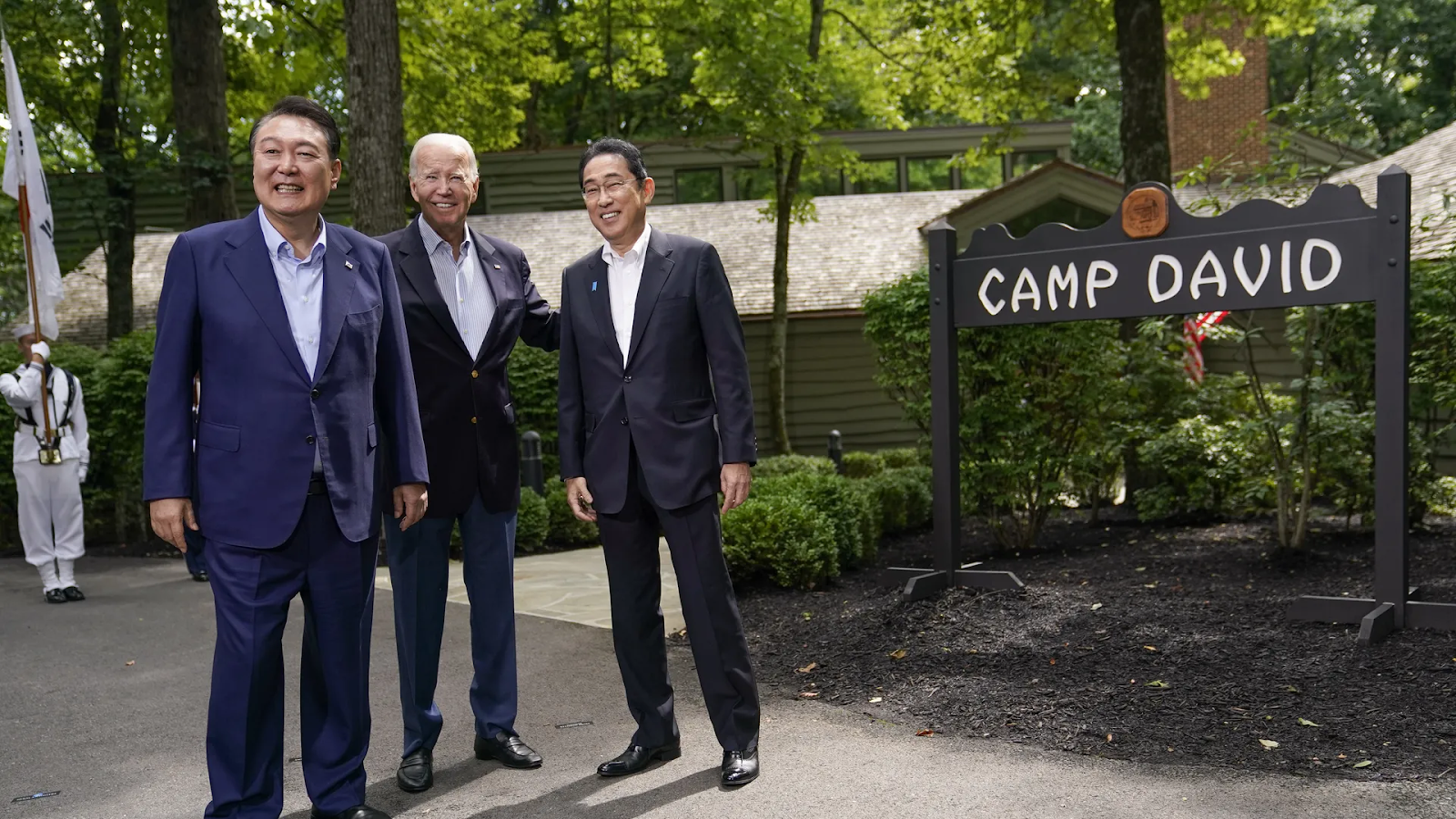

1 Comment
Kathie
4 years agoKeep going!
Fighting!
Comments are closed.